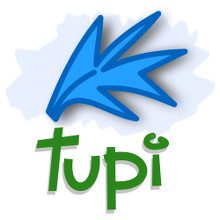 For December, I thought it would better to hear directly from the source with an interview. Gustav González, the main developer for Tupi, has been making great strides with his software even though he’s had limited development time and monetary support. If you’re not familiar with Tupi, it’s 2D animation software that’s similar to Flash or Toon Boom, using vector illustration tools to create animations.
For December, I thought it would better to hear directly from the source with an interview. Gustav González, the main developer for Tupi, has been making great strides with his software even though he’s had limited development time and monetary support. If you’re not familiar with Tupi, it’s 2D animation software that’s similar to Flash or Toon Boom, using vector illustration tools to create animations.

Tupi is an ideal example of open-source software that needs support from the community. Gustav needs backers, testers, programmers, and artists to make his vision come together. If you find his development compelling but don’t have money to donate, consider donating your writing skills, your art, or your programming abilities. Gustav has greatly improved Tupi in 2014, but he needs more money, people, and efforts to get Tupi.
For over a year, I have helped Gustav with his fundraising and monetary donations when I can. Donate if you believe in open source or would like to support creating a 2D animation program that’s free for everyone to use. I’m happy to make Tupi my Offsetting donation for this month.
Talking Tupi with Gustav
How did you first get involved with Ktoon/Tupi?
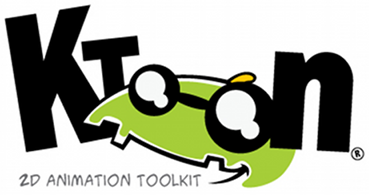 KTooN started at 2002, when I proposed to a friend, Monica Ortiz, to develop a free software solution to replace Macromedia Flash for her 2D animation company, Toonka Films. Our main goal was to provide a free/open tool for small 2D animation companies looking for developing their first productions. Back then, we didn’t expect any impact further than Latin America.
KTooN started at 2002, when I proposed to a friend, Monica Ortiz, to develop a free software solution to replace Macromedia Flash for her 2D animation company, Toonka Films. Our main goal was to provide a free/open tool for small 2D animation companies looking for developing their first productions. Back then, we didn’t expect any impact further than Latin America.
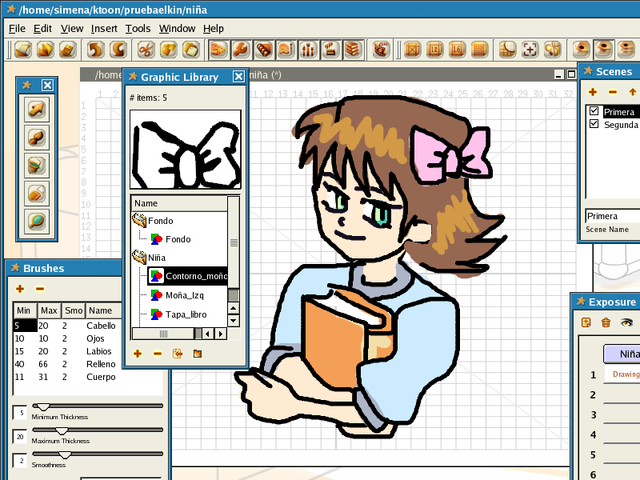 At 2010, I decided to create a fork called Tupi after differences with my partners. The new Tupi brand was required because of copyright issues. Since KTooN was free software from day one, I could reuse the its entire source code.
At 2010, I decided to create a fork called Tupi after differences with my partners. The new Tupi brand was required because of copyright issues. Since KTooN was free software from day one, I could reuse the its entire source code.
What makes Tupi unique?
That’s a hard question to me because Tupi is not a mature software application yet. Nevertheless, there are several facts that make me think that the project is evolving in the right direction, especially Tupi’s usability. Currently, there are many missing features pending for implementation, but the global environment that Tupi provides right now to create a 2D basic animation is having a lot of acceptance by users from many countries around the world (most of them, children). All things considered, I must say that the best feature AND the spirit of Tupi is user experience.

Why has Tupi become a passion of yours?
I have been entrepreneur my whole adult life, and after several unsuccessful tries, there was a moment when I didn’t know what else to do. In fact, I’ve been very afraid of failing as professional because I am not the kind of guy who can work as employee behind a desk for the rest of his life. I can’t deal with the idea of having a boss. I need to work on something special, something different, something global… . So, one morning I woke up and a voice told me: “You should go back and work on KTooN”. Months later Tupi was born, giving me all the expectations I was looking for as computer scientist and as professional. Right now, I can’t imagine doing anything else.
What were your goals for Tupi in 2014?
Usually, every year I start writing a route map document describing the goals for the next 12 months. And usually although I do my best, I can’t reach all of them.
In 2013 I wrote an ambitious to-do list but unfortunately, I had a tough year so I couldn’t achieve a significant number of goals outlined. For that reason, I decided to keep working on the same list. Most of the items are related to basic illustration tools and a handful of animation features.

Which of your goals did you meet?
Some of the features I could implement this year were:
Stop motion module for webcam
Stop motion and using image reference got easier with the Stop motion tool.
Movable layers
Being able to easily move layers above or below in the visible stacking got Tupi closer for everyday use.
Selection nodes enhancement
I fixed a glitch in Tupi, making it possible for artists to zoom into their drawing without the anchor points also increasing in size and blocking the art.
Papagayo lip-sync support
Papagayo’s a lip-sync tool that’s also open source. In the past year I’ve created integration between the two programs to make lip syncing easier and accessible in Tupi.
Time line module
For people who want a Flash-like experience, I created a timeline that’s similar to Flash.
What was your greatest triumph in 2014?
Definitely, it was the Tupi installer for Windows. That was the most constant request I received from people since 2010. Although I had tried to build it unsuccessfully several times in past years, I decided to give it a last chance. During one month of deidicated focus on making the port of Tupi’s source code to Windows 7, I was able to finally run Tupi in Windows for the first time. It took a lot of long nights and hard work,
A little record about the process (day by day) can be found here.

(Note: Because the lack of hardware, the installer of Tupi for Windows 8 is still missing but technically is absolutely possible.)
What expectations did you not meet in 2014?
This year I tried to run a crowdfunding campaign for the project, specifically to create the Windows installer. The funny thing is that I actually kept my promise although I couldn’t collect the expected money to acquire new hardware.
The most disappointing matter about an unsuccessful crowdfunding campaign is that sad feeling of loneliness—the idea that you are alone on your mission—even when you are working on a free software project used by many people around the world.
If you could do 2014 over, what if anything would you do different?
My passion for Tupi as developer has made me live inside an insulated bubble since the beginning of the project. Releasing new minor versions as soon as possible was my first and only strategy to create a big community around my initiative, but I must confess that it has failed in an epic way. I am a developer, a computer scientist, not a business man and that is a weakness when you discover that any free software project is, in some way, a little company.
When you think of the 99% of the free software projects around the world, suddenly you can recognize some patterns on them:
- The people behind the idea don’t have enough funds to do what they would love to do for the project (i.e. acquire new hardware, pay developers full time, you name it)
- They work on their projects at nights and weekends as Bill Gates described in his biography.
- There is no any business or management strategy behind the project, because it is about free software, so you shouldn’t think of money even if you need it. Everything “must be” free. If you need money then go out to the real world and look for a “real job”.
- If you ask them if they would like to work on their free software project for full time, most of them will answer: “of course, we would love to!”
So, there is some kind of paradox in the free software community. And sadly, Tupi is included in that universe.
If I could get back to January, I think I wouldn’t have invested so much time and effort into an unsuccessful crowdfunding campaign. Instead, I would be focus on the steps required to create a foundation for Tupi. Without a formal institution behind the project, Tupi could disappear in the without notice because my idealistic vision didn’t work.
Fortunately, there is a 1% of free software projects out there, proving that it’s very possible to create great free software applications following a “company” approach, if you allow me to use that term.
The case I love to mention is Mozilla—what free software project wouldn’t like to have the infrastructure and the model they have? Well, my biggest regret of 2014 is not starting to think like them from the beginning of the project.
What improvements were made to Tupi in 2014?
The development model of Tupi is focused on small and frequent releases, so the idea of adding new features and small (but many) fixes are happening all the time. As I am the only developer of the project, the impact of that changes is not so huge as I would like to, but the users notice them in some way. For this year I only made 2 releases, but the Windows port and the second OSX release were the very highlight of the year.
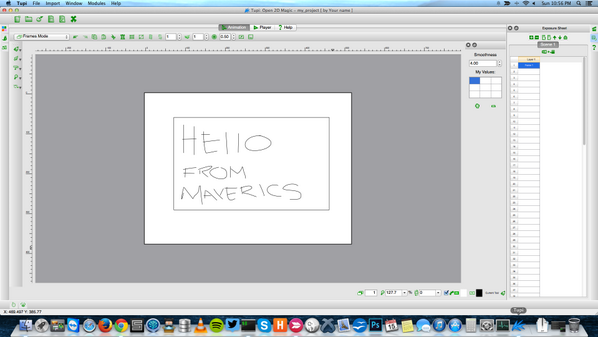
What’s the plan for 2015?
The first goal I have in mind for next year is to look for the right partners to create a formal foundation for Tupi. After 5 years of hard work (and yes, developing Tupi is my job), the project has a lot of assets that deserve the resources required to take Tupi to the next level.
The lack of institutional management must disappear. Is it possible that I have to beg as a homeless for a new laptop to work on a project that is being used by thousands of children in schools around the world, and for some amateur and professional animators? I don’t think so.
But the money shouldn’t come from individuals, it must come from institutions, from companies (including animation companies), from the bigger foundations. The money’s right there, but I have to do a hard work of management and networking to get it.
In 2015, to find the right people to handle the “business” part of the project is my highest priority, people with the required skills to connect Tupi with the big players, those which are looking for supporting good causes (and Tupi definitely is a good cause).
What help from users and the open-source community would help you move faster with creating a solid animation program?
Where should I begin? People are very funny. Some of them used to tell me: “When Tupi becomes a professional and stable tool, I hope to help you to spread the word of the project!” and things like that. In some way, I think they truly believe that Tupi will be finished by itself in some kind of miraculous action. All they have to do is just to wait.
Sadly, that’s the a fact I have to accept: there’s no community around Tupi yet. Less than 5 guys are actually helping me with some tasks related to the project from time to time. Too few hands in contrast to the impact that the project is having in many places.
There are many ways to support Tupi, but people always find a perfect excuse to avoid it: “”Sorry, I am an artist not a developer”, “Sorry, I don’t have money right now”, whatever.
First at all, you don’t need to be a developer to help. There are many tasks that you can do to support Tupi:
- You can be a tester, and report the bugs you find
- You can create small tutorials and screencasts about some of the features of Tupi
- You can create examples of 2D animations made using Tupi and post them at Youtube and social media to spread the word
- You can write a blog post about the role of Tupi in your classroom
About money, you can start helping with one dollar. One dollar per year if you wish. If I could get one dollar for every current user of Tupi (including children), surely I will have the enough budget to pay five full-time developers per year for the project. Can you imagine how fast will grow the Tupi development with five guys coding for one year?
Ok, let’s accept you don’t have that dollar to help right now, these are some suggestions you could try to help if you really want to:
- Collect some bucks from your family and friends for the Tupi cause. One dollar is enough If you can get more, any cent is very welcome.
- Make a party and sell some stuff to your guests, food and drinks, whatever you want. From the profits, donate at least one dollar to the Tupi cause.
- Make a raffle of any cheap gift for the Tupi cause. From the profits, donate at least one dollar it to the Tupi cause.
As you can see, with a little imagination you will be able to discover thousands of ways to support the project. And some of them are very simple.
With a very little help of every Tupi user, the chance to fund a complete year of development will be possible. The great challenge to me right now is about how to create that sense of ownership between people and the project—to make them understand that the project actually belongs to them. Therefore, the project needs them.
Are there goals that you have had to put on hold and why?
There are two ideas that I would love to implement as soon as possible, but that require an important amount of developers and resources. These are:
- To finish and release the real-time collaboration system that has being developed for Tupi from the times of KTooN.
- To finish and release the Tupi mobile app I started to develop at 2013.
Due the lack of funding I hardly just can work on Tupi, so these ideas will have to wait until there’s funding and dedicated staff.
What features are on the horizon?
I must confess that it’s not easy for me to think of new features for Tupi when so many basic features are missing yet. The whole set of illustration tools is still too basic, the tweening tools are incomplete, the undo/redo stack is very unstable yet, and sound support doesn’t exist. My focus and priority right now is to finish all the minimal components that Tupi should provide for creating 2D animation.
What big life lesson have you learned from working on Tupi so far?
I think this is it—the most beautiful and heartwarming action of human nature is to serve others—especially if you do it in a spontaneous way and without expecting anything in return. Of course, it’s one thing just to say and another to actually do it.
Getting involved in a Free Software project as a collaborator in every sense is a very effective way to live. You’ll understand your purpose when you receive an email from someone you don’t even know, saying “Thank you for your help! Thank you for what you do!”.
For example, one day I got an email from a teacher who lives in Kerala, India and he told me that in 2013, about 400,000 kids from there learned to make their first animations using Tupi. How can I feel about that? How would you feel?
Are you happy with the progress you’ve made?
I must say I am very satisfied with all the effort I have invested in the project. Happy? Yes and no, because I am aware that a one-man army is not enough to accomplish this mission. I am happy for all the people who is using the software, and much more when they tell me about the potential they see in Tupi. But on the other hand, I am afraid of the challenge of getting the current state of Tupi to its first professional version. I am very afraid of failing in some point of that long process.
Are you enjoying your work?
Absolutely. Working on Tupi reinforces my sense of purpose. Of course, this feeling is not always positive. There are too many things to do yet, the project is still in a beta stage, I need to create a large community around Tupi as soon as possible. As you can see, there are many challenges out there requiring my actions—so, my joy is incomplete, it’s in development. It’s an anxious joy!
What’s your ideal vision of Tupi look like?
Well, my personal dream is that Tupi becomes a worldwide reference for 2D animators. I envy the golden age of “Adobe Flash” as an icon for artists. I guess I would love that level of popularity for Tupi but from an absolute free culture perspective, invading all the possible operating systems and including a large and active community of users around it.
Of course, to achieve that status, Tupi needs to provide all the basic and advanced features that is necessary for 2D animation software. So, there is a long way to go!
Additional support
As part of my monthly contribution, I am also a subscribing member of the Blender Cloud with a reoccurring monthly donation. If you are first learning Blender, the site is a wonderful resource of videos for learning modeling and animation techniques. They also have access to all the art and assets from their upcoming open-source animation, The Gooseberry Project.
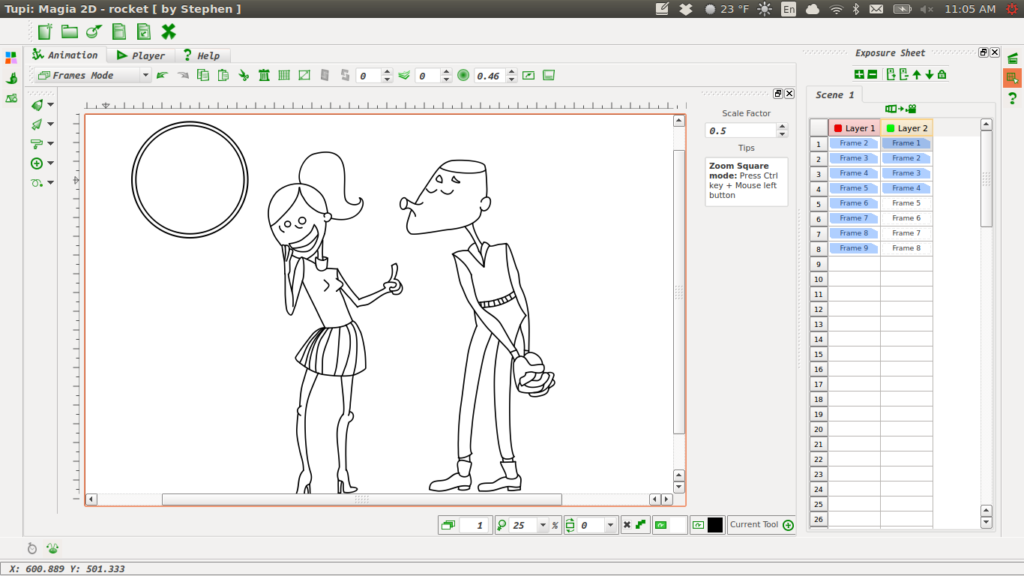
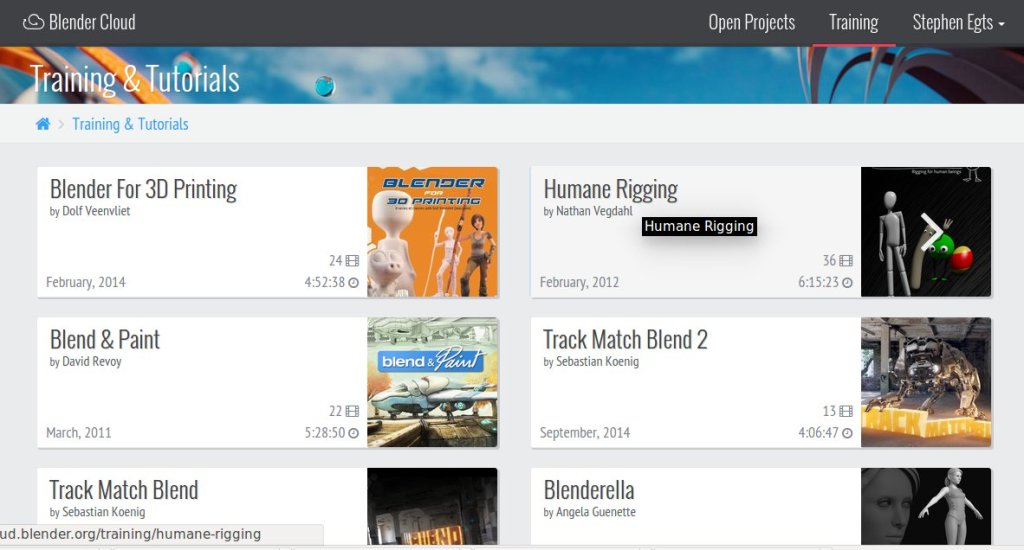
Please consider donating to https://github.com/mozilla/shumway It’s Mozilla’s HTML5 replacement for Adobe Flash.
Pingback: monsterjavaguns.com Open Source Creative Podcast #14 – Taking the Flipside
I agree! Glad you enjoyed it. It’s a great tool that’s very approachable for artists with a low learning curve. Gustav is pretty amazing.